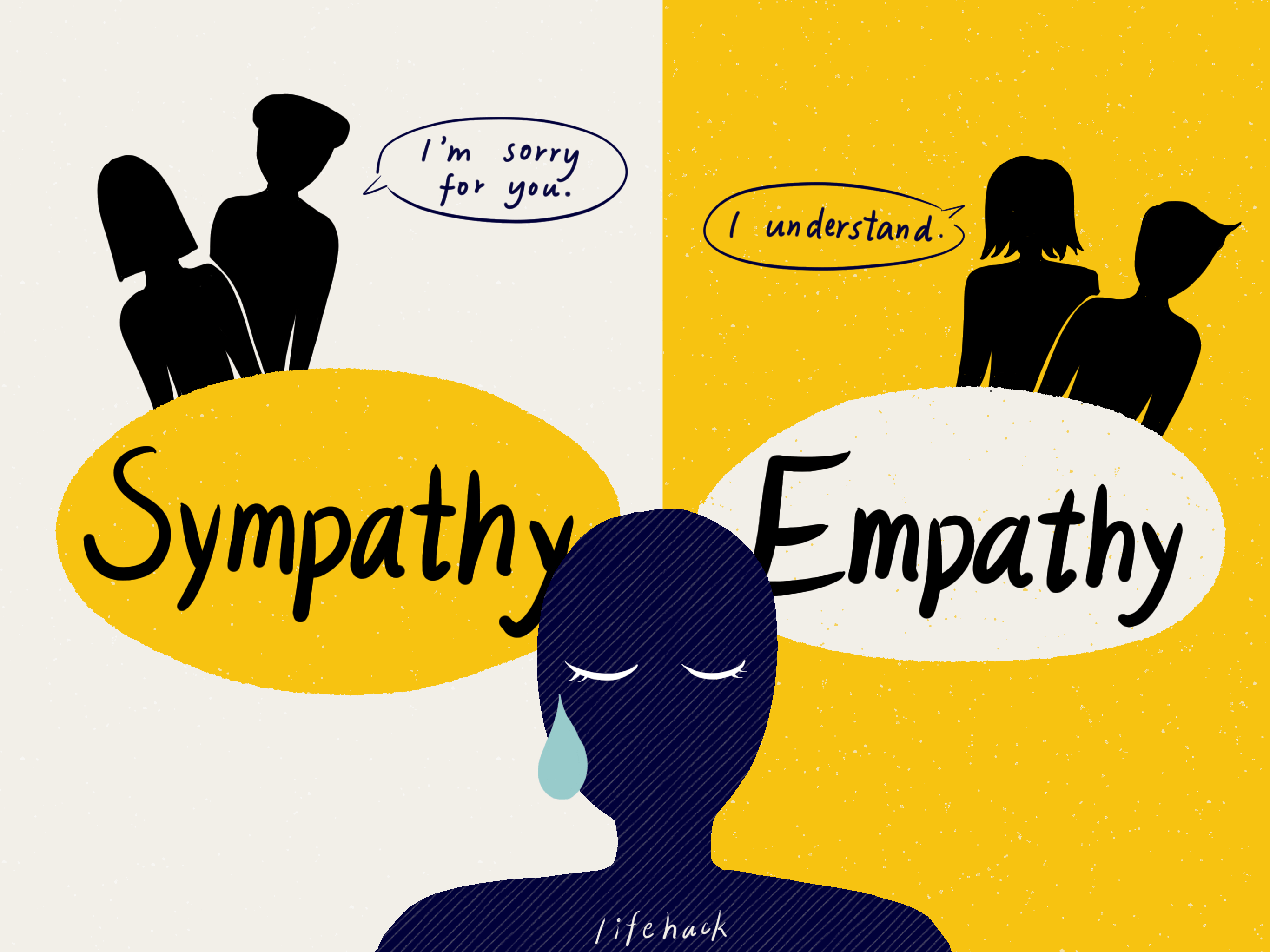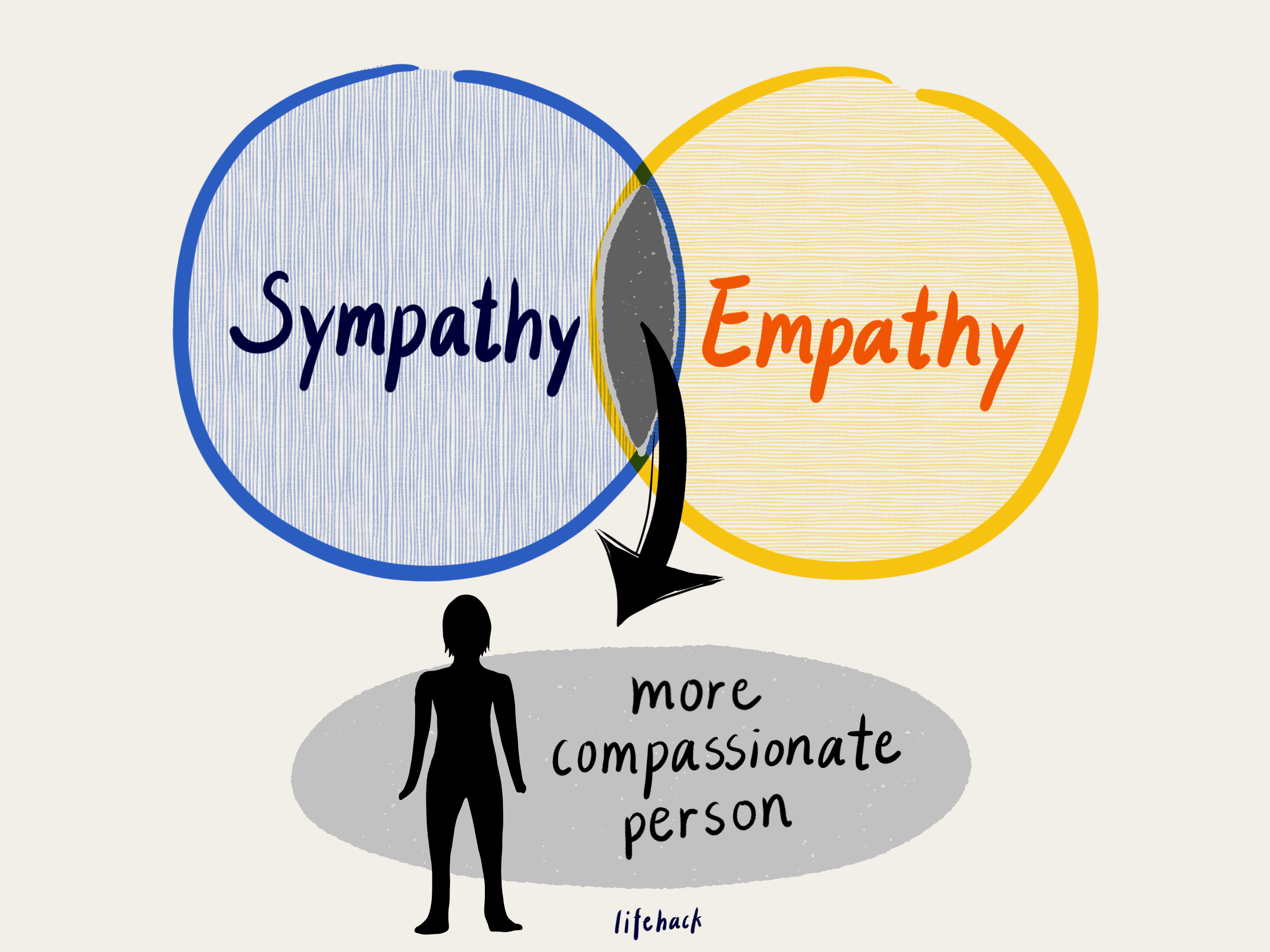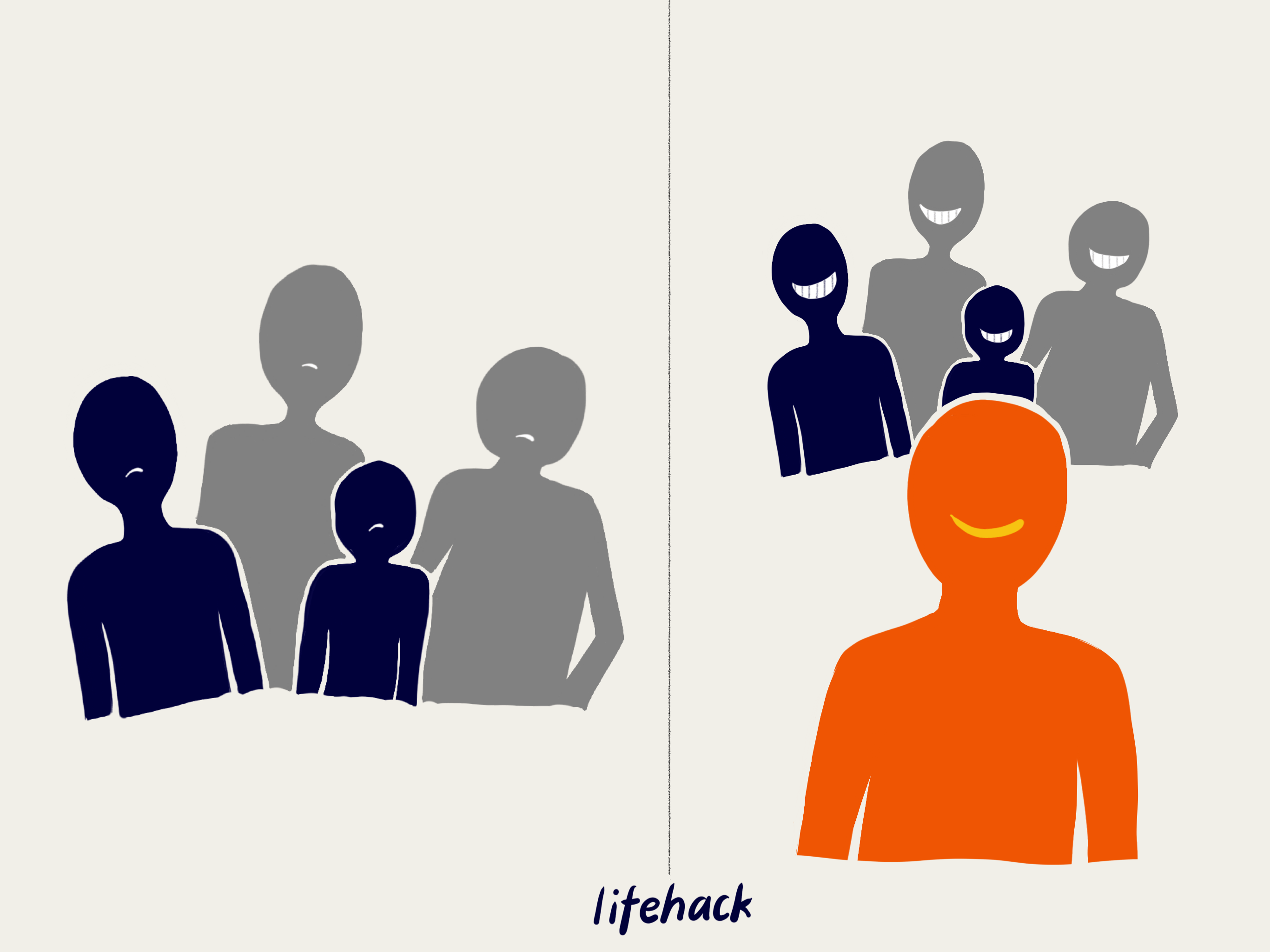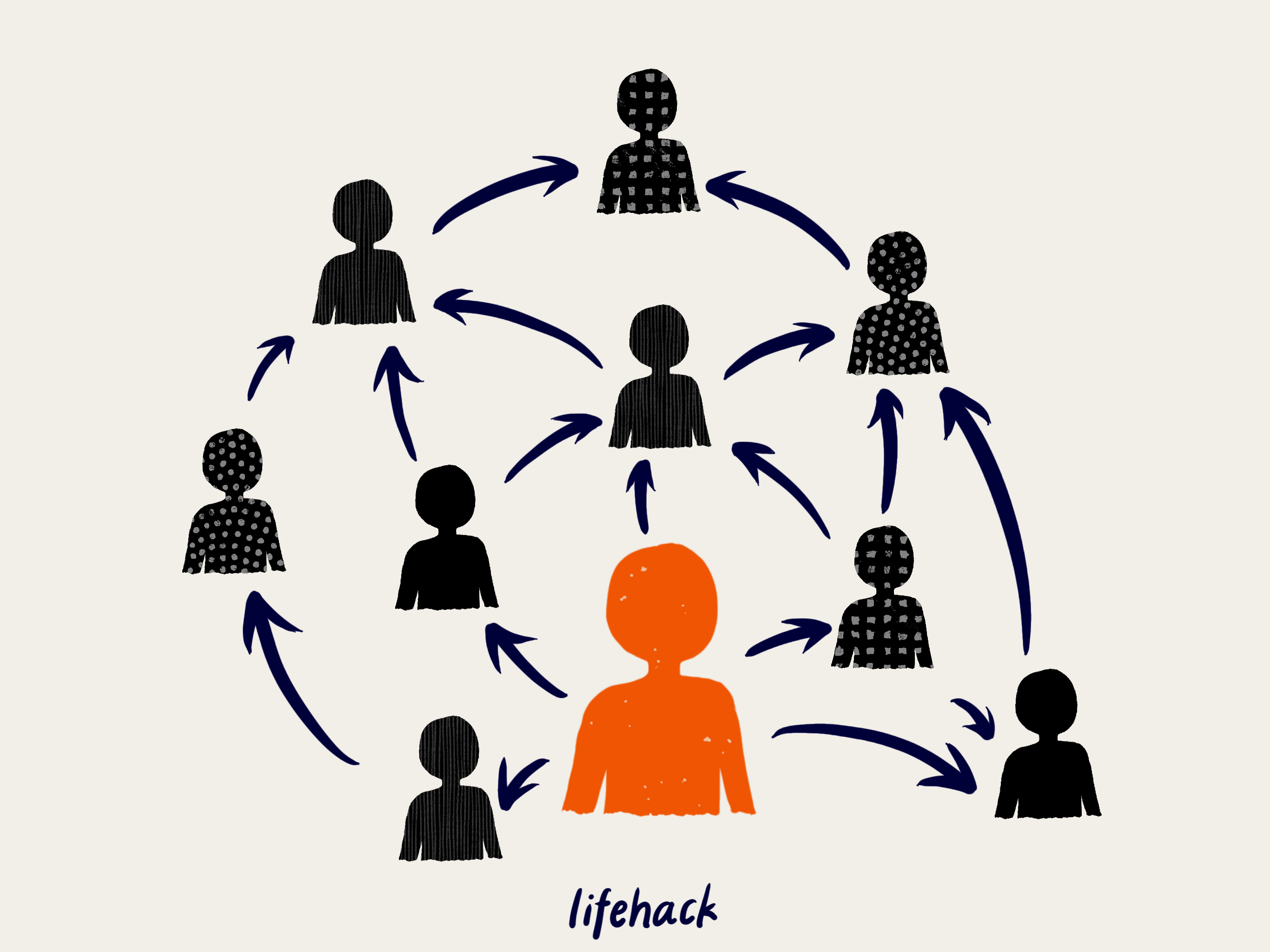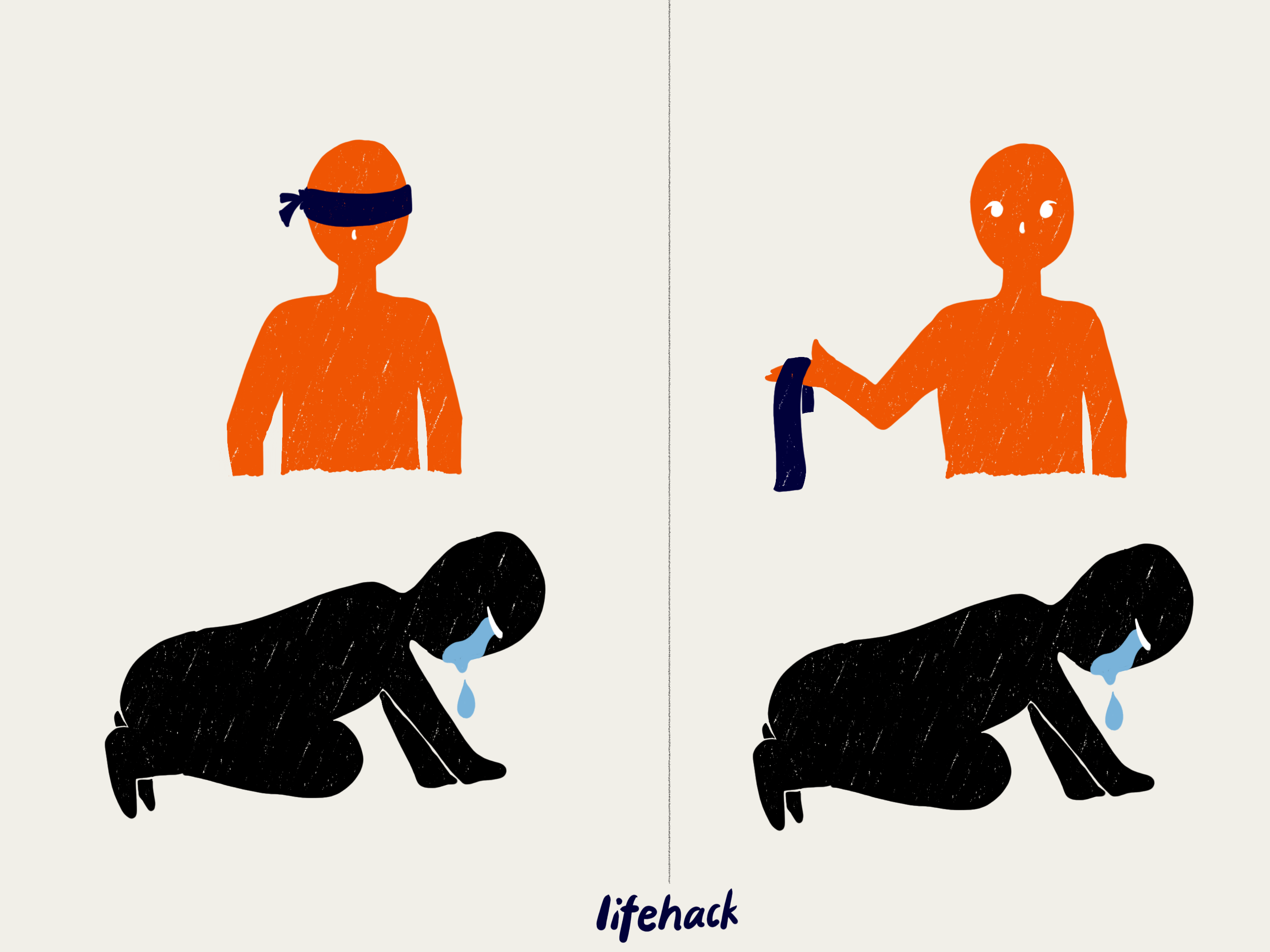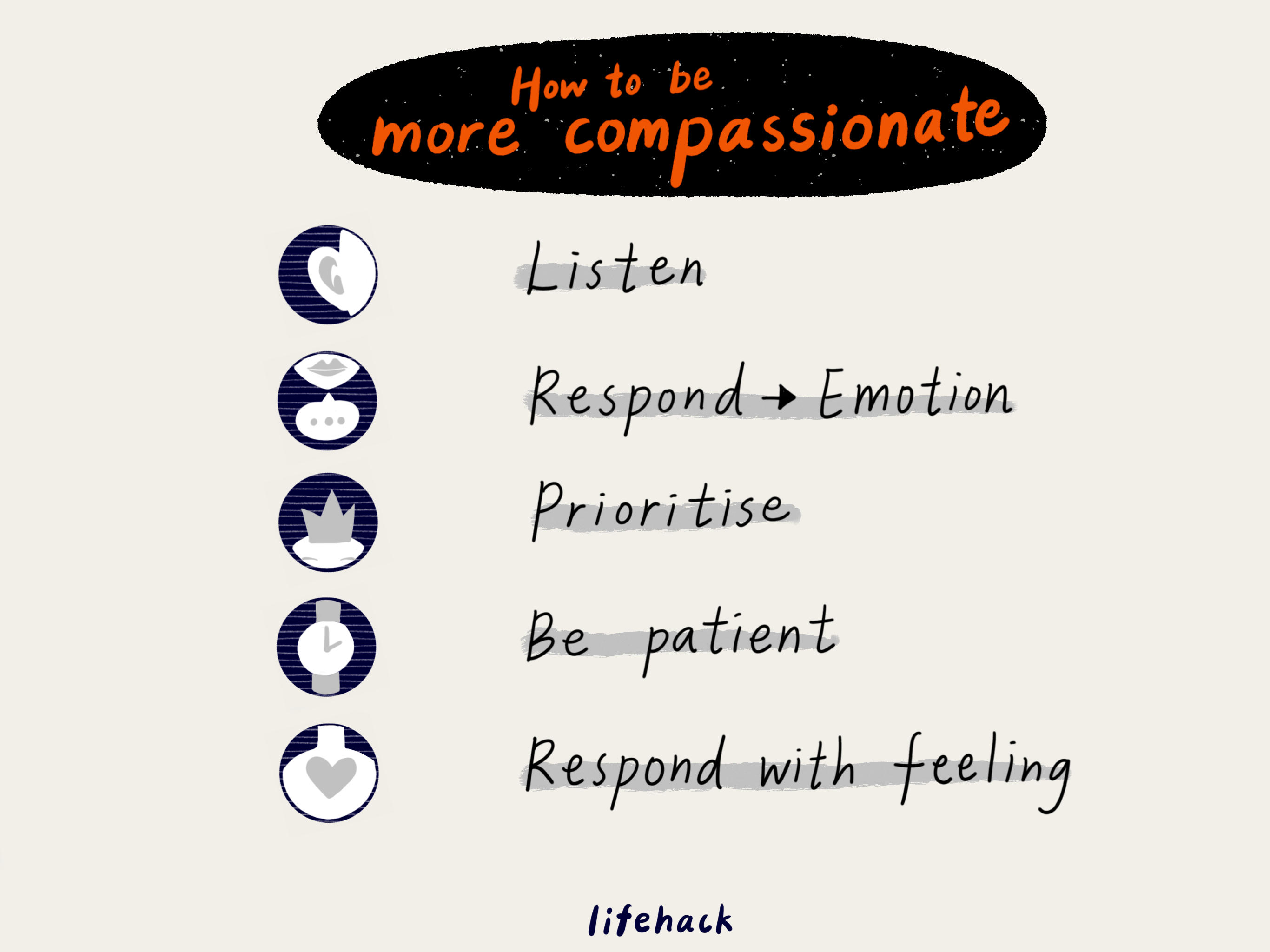These words are also commonly ascribed to situations of sadness and mourning, as people try to identify with a particular group or individual that has been afflicted by tragedy. Despite the similarities in terms of application and origin, however, there are core differences that separate the two words. Sympathy describes the feelings of compassion and pity that we may have for another person’s plight, whereas empathy enables us to put ourselves in the shoes of those who are suffering and share directly in their sadness. Knowing how these two are alike and different is essential to making informed choices when dealing with tragedy and crises in your own life.
Empathy vs. Sympathy: Exploring the Differences
Researcher Dr. Brené Brown’s video on empathy vs. sympathy provides a clear picture of what it feels like when we reach out to others in a time of despair and how they react to us. She points out that empathy and sympathy are two very different things, where empathy “fuels connection” and sympathy “drives disconnection.” Through her fun and interesting cartoon, she illustrates that we need others to feel with us, as opposed to the ever-popular idea of providing a silver lining. Often, we want to fix a situation in order to alleviate our own stress over the despairing individual’s emotions. This causes us to push away and invalidate their feelings. While this may stop their outward grieving, it drives disconnection and prevents healing. It causes an individual to stuff their true emotions and pretend they don’t exist because they have now been shamed out of their reality.
Exploring Empathy vs. Sympathy Further
In our quest to explore empathy vs. sympathy more, let’s return to the Greek origins of both words. We have already touched on how they have been derived from the word “pathos.” However, the prefix “sym” in “sympathy” also relates to the Greek iteration “syn” (which means “together with”). Conversely, the prefix “em” in “empathy” derives from the Greek description of “within,” highlighting the core difference between showing solidarity with others and vicariously immersing yourself in their plight.
To put this into context, let’s cast our minds back to David Beckham’s sending-off for England in the 1998 World Cup against Argentina. While there was vehement criticism of his actions and the impact that they had on the team (England was eliminated after a valiant display), casual and non-partisan observers had sympathy for Beckham as they believed that he was being harshly treated. Fellow professionals who had endured similar scrutiny during their careers expressed empathy with Beckham, however, as they were able to place themselves directly in his shoes and understand precisely how he was being affected. The same principle applies to individuals who have also suffered heavy criticism or persecution in the workplace, even if their experience is not directly related to Beckham’s. Those who were close to Beckham also expressed empathy, as they had endured similar afflictions also suffered after the event and found themselves vicariously sharing in the English midfielder’s plight.
How Do These Differences Manifest in Thought and Deed?
Another way of knowing sympathy and empathy difference is to see how it manifests in action. This is also important in finding out when to use sympathy vs. empathy. To begin with, sympathizers will share their concerns and condolences with others while openly admitting that they have no direct knowledge of how they actually feel. This often translates into generic support that is offered unconditionally, without actionable advice or additional input that may diminish the sufferer’s state of mind. In contrast, those with the ability to emphasize will instantly immerse themselves in the shoes of others by tapping into a shared experience or relating to a similar one. This means that you visualize how the individual in question is feeling and have the subsequent ability to treat them in a way that is relevant and appropriate. Similarly, an empathetic outlook enables you to offer valuable insight and advice, which may help the individual to develop new coping mechanisms.
Both Are Central to Becoming a More Compassionate Person
At this point, we need to discuss sympathy vs. empathy vs. compassion. It is worth noting that being both empathetic and sympathetic is mutually exclusive. This means you can showcase both individually, either simultaneously or as each individual scenario requires. It is important to remember this, as having both a sympathetic and an empathetic mindset enables you to become a compassionate person who can offer relevant comfort and support to those in need. Not only this but there are also other scientific and psychological benefits of being compassionate, including the following:
1. It Uplifts Those Around You
In simple terms, showcasing compassion has been proven to have an uplifting impact on those around you. According to Jonathan Haidt at the University of Virginia, witnessing people help others creates a state of elevation in the human mind, while it also empowers them to do the same. [1]
2. It Inspires Action
On a similar note, compassion is also proven as a great motivator of action. Certain studies have explored this at length, revealing that subjects who had been meditating and focused inwardly were more likely to act on their sense of compassion, even if it opposed a social convention. This shows how powerful compassion can be and highlights its ability to drive specific actions.[2]
3. It is Infectious
We have already touched on how compassion can create a state of elevation and inspire others, and there is no doubt that it has a dominant effect on the mind of others (particularly those who have benefited from acts of compassion).
4. It Makes Us Less Likely to Avoid Those in Pain
Let’s face facts: The sight of others being in pain can be distressing, and it is natural to seek flight during such times. It has been proven that a fortified sense of compassion changes this conditioned response over time, as avoiding negative emotions is replaced directly with positive compassionate actions. [3]
5. It Makes Us More Attractive to Others
From a purely insular perspective, it is also interesting to note that being compassionate makes us more attractive to others. Studies on dating preferences have shown that both men and women rank kindness as one of the most important qualities that they look for in a partner, as this ties into our fundamental desire to be loved and taken care of at all times.
How Can You Become More Compassionate as an Individual
There are numerous benefits of being compassionate, far more than we have listed here. In order to capitalize on these, you will need to become a more rounded and compassionate individual, however, and the good news is that compassion can be learned and honed through training techniques such as meditation. [4]
But what are the core elements of this, and what practical steps can you take to become a more compassionate individual? Let’s take a look:
1. Listen Because Who Doesn’t Want to Be Heard?
At the heart of every compassionate person is an innate ability to listen, but this is one of the hardest life skills to develop. It requires us to suspend all judgment and offer our undivided attention to speakers as we digest their words and the context in which they are spoken. This is central to acts of both sympathy and empathy, as listening enables us to respond in the most relevant and impactful manner.
2. Respond to the Emotion Because This Shows Your Care
As we have already said, it is important to consider the context in that words are spoken when listening to others and, more specifically, the emotion that underpins them. By delving beyond literal interpretations and accepting that words alone can conceal emotions such as guilt, fear, and anxiety, we can understand others in greater depth and build compassionate relationships going forward.
3. Prioritize the Person So They Feel Important
When we talk about compassion and empathy vs. sympathy, we are almost always referring to someone who is spiraling into a negative path. The key to being compassionate is to recognize the positive attributes that define the person in question and never lose sight of their human qualities. This ensures that you judge each specific situation rather than the person involved, while it also offers you an opportunity to reinforce these characteristics and build positivity.
4. Be Patient Because There Might Be a Lot Going On
When attempting to reach someone who is gripped by negative emotions, it can be difficult to build trust and rapport. While the tips listed above will help you to become more compassionate and a superior listener, you will also need to display tremendous patience as people begin to realize that they can open up to you. This will certainly require a selfless outlook and one that always places the needs of the sufferer ahead of your own.
5. Respond With Feelings to Show You Feel Their Emotions
No matter how much listening you have to do as a compassionate individual, there will always come a time to respond. This is where your understanding of the other person and their plight is imperative, as this should condition your response and promote an honest, meaningful reaction. The key here is that you respond with feeling, as this showcases the fact that you care and remain immersed in the other person’s trials.
Final Thoughts
While we have observed numerous differences between empathy vs. sympathy, they share a common origin while both lay the foundations for becoming a caring and compassionate person. The benefits of this are numerous, both for you and the mental well-being of those around you. Use this knowledge of the differences between sympathy and empathy to help you navigate life and help others in the best way possible. Featured photo credit: Yuri Figueiredo via unsplash.com
